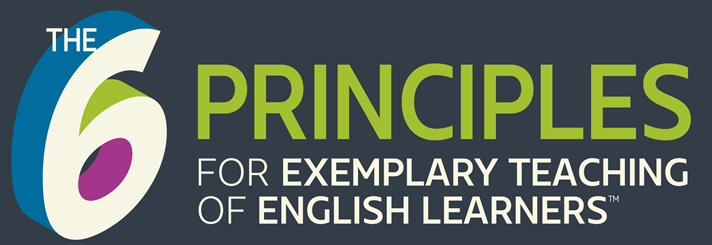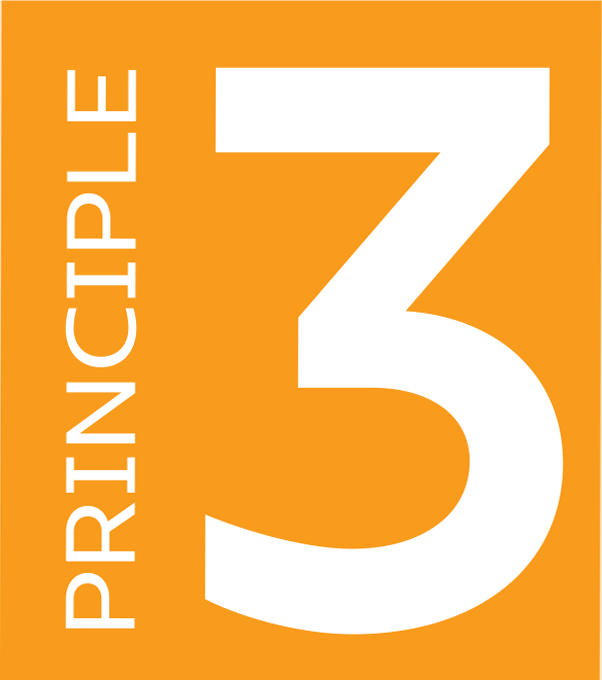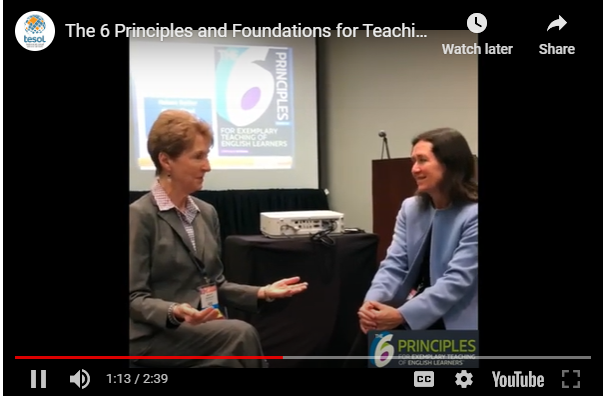Some Practices for Principle 3
Teachers use comprehensible input to convey information to students.
Comprehensible input is of primary importance for progress in the target language. Whether oral or written, comprehensible input helps English learners understand the meaning of the communication. Teachers scaffold the language input in multiple ways to aid learner perception and promote understanding.
Teachers communicate clear instructions to carry out the learning task.
Teachers use and teach consistent classroom management practices and routines throughout the school year in an effort to help students understand what is expected of them in a classroom and throughout a lesson. Teachers use simple directions with patterned language that they repeat each time.
Scaffolding for Comprehensibility
Scaffolding for Comprehensibility
- Gesturing and using facial expressions
- Illustrating and using visuals
- Relying on high-frequency vocabulary
- Embedding definitions and explanations
- Providing or asking for L1 translation
Explanatory Devices for Comprehensibility
- Visual aids
- Audio supports and other multimedia
- Bilingual glossaries
- Picture dictionaries
- Simplified English or home language summaries
Modeling and Demonstration
- Targeting and modeling the appropriate language register (academic language vs. social language; word choice)
- Providing demonstrations of language in use (e.g., model student essays, sample completed projects)
Classroom Activities That Support Principle 3
Try these activities from books in the popular New Ways Series from TESOL Press!
Try these activities from the TESOL Resource Center.
- Communicative Competence and Performance: Getting Young Learners to Use the Target Language
- The Eight Planets Orbiting the Sun
Beyond the classroom, teachers address Principle 3 in other ways
Develop and Review Curricula, Materials, and Assessments
- Teachers of English learners can help to improve curricula, materials, and assessments in several ways. At the state level, they can serve on curriculum development committees, helping to develop or revise English language frameworks or standards. They may participate in state-level efforts to infuse language development and English learner–appropriate teaching techniques into grade-level and content-area frameworks
- Teachers of English learners may also design or review district formative and summative assessments or create rubrics for measuring student progress, taking into consideration the different English proficiency levels that students exhibit.
Establish a Culture of Shared Responsibility
School Principals and Assistant Principals
To fully embrace your position as educational leader of your school, read all the chapters in The 6 Principles for Exemplary Teaching of English Learners so that you are well versed in what constitutes a high-quality instructional program for English learners.
Colleagues
Show your colleagues strategies and techniques that integrate content and language instruction and allow English learners at all levels of English proficiency to have access to and participate in grade-level, standards-based instruction.
Reading Specialists and Instructional Coaches
-
- Adopt research-based approaches to the teaching of reading and writing in a second language, and make sure that these approaches are in use in all instruction settings in which English learners participate.
-
- Promote professional learning at your school related to the effective education of English learners, focusing on teaching strategies, materials, and programs.
-
- Offer teachers well-selected materials to enhance learning for English learners and guide them in selecting or adapting instructional materials for students of varied proficiency levels. Help teachers understand the types of scaffolds to look for as they choose materials (e.g., captions, bolded words, clear illustrations and graphics that match the text, glossaries, audio versions of texts). Provide materials in the home language that can be used with English learners who are literate in their home languages to support content learning.


